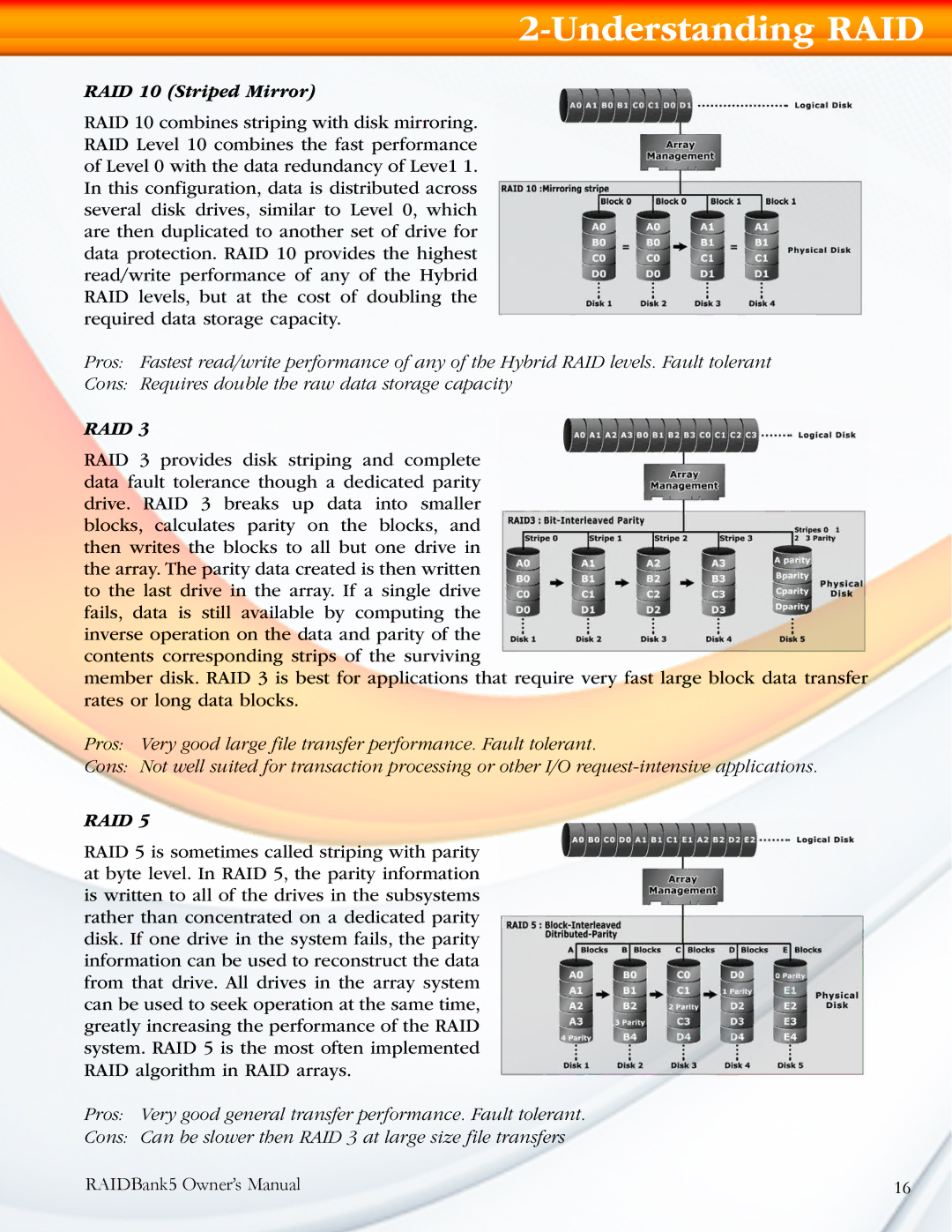
2-Understanding RAID
RAID 10 (Striped Mirror)
RAID 10 combines striping with disk mirroring. RAID Level 10 combines the fast performance of Level 0 with the data redundancy of Leve1 1. In this configuration, data is distributed across several disk drives, similar to Level 0, which are then duplicated to another set of drive for data protection. RAID 10 provides the highest read/write performance of any of the Hybrid RAID levels, but at the cost of doubling the required data storage capacity.
Pros: Fastest read/write performance of any of the Hybrid RAID levels. Fault tolerant
Cons: Requires double the raw data storage capacity
RAID 3
RAID 3 provides disk striping and complete data fault tolerance though a dedicated parity drive. RAID 3 breaks up data into smaller blocks, calculates parity on the blocks, and then writes the blocks to all but one drive in the array. The parity data created is then written to the last drive in the array. If a single drive fails, data is still available by computing the inverse operation on the data and parity of the contents corresponding strips of the surviving
member disk. RAID 3 is best for applications that require very fast large block data transfer rates or long data blocks.
Pros: Very good large file transfer performance. Fault tolerant.
Cons: Not well suited for transaction processing or other I/O
RAID 5
RAID 5 is sometimes called striping with parity at byte level. In RAID 5, the parity information is written to all of the drives in the subsystems rather than concentrated on a dedicated parity disk. If one drive in the system fails, the parity information can be used to reconstruct the data from that drive. All drives in the array system can be used to seek operation at the same time, greatly increasing the performance of the RAID system. RAID 5 is the most often implemented RAID algorithm in RAID arrays.
Pros: Very good general transfer performance. Fault tolerant.
Cons: Can be slower then RAID 3 at large size file transfers
RAIDBank5 Owner’s Manual | 16 |
